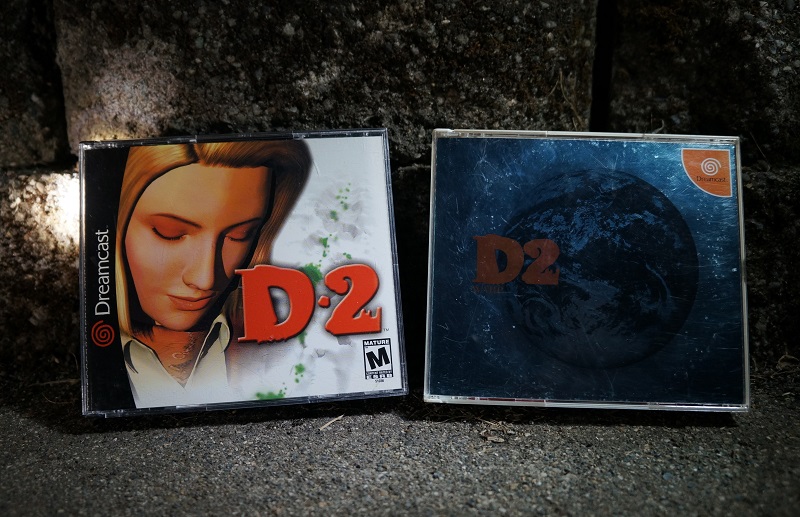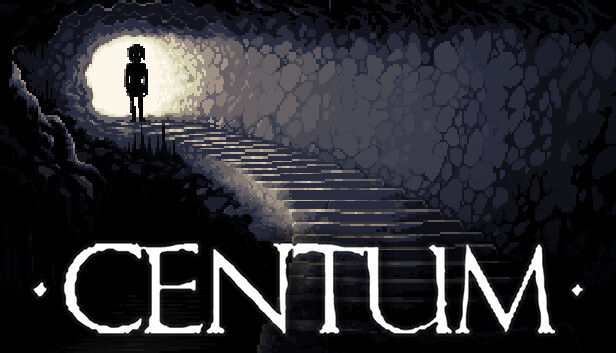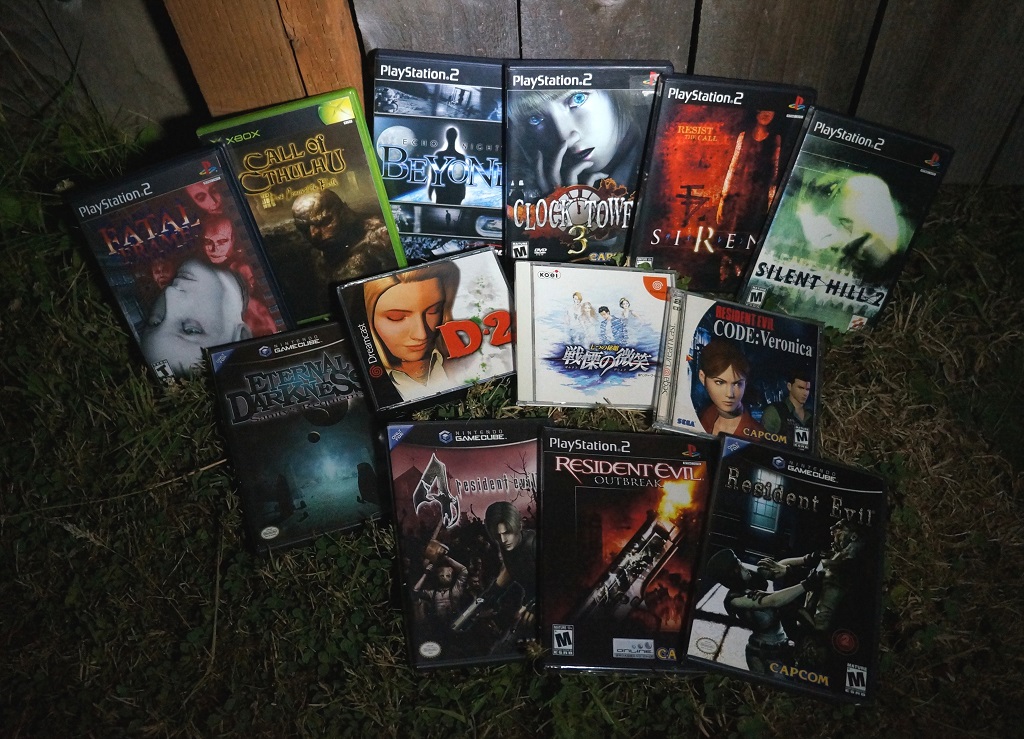
Generations of Horror is a series of articles that takes a journey through the history of console horror gaming by focusing on a certain era or generation of game consoles, and discussing some of the most unique, important, or pioneering titles from those periods. If you missed the previous articles in the series, you can catch up with parts one, two, and three.
After the mid-90s and the PlayStation/Saturn generation, the video game industry continued to steadily grow in size, revenue, and influence in the world of entertainment. So too did the budgets, scope, and technology that was thrown behind the games and hardware that powered them.
Starting with the launch of Sega’s final, powerful, yet ill-fated Dreamcast console in 1998, a new generation of horror games was born, showcasing immersive experiences where the fidelity, size, and art direction reached new levels of sophistication most players had only dreamed of before.
Soon after the Dreamcast launch, Sony released their follow-up to the original PlayStation, the PlayStation 2, in 2000, and Nintendo also followed with their own GameCube just one year later in 2001. At the same time, newcomers to the console game, Microsoft, would release their new Xbox console neck-in-neck with Nintendo’s GameCube at the end of 2001, making the race for console superiority more fierce than ever before.
The horror games of this generation that benefited from the jump forward in power, graphical capability, and financial investment would come to be recognized for ushering in a sort of “Golden Age,” with many of these games still being touted as some of the greatest horror games ever created to this day.
As always, we’ll take a deeper look at the noteworthy games from this era and what kind of legacy they’ve left.
*All photos by the author from their personal collection
**Release info will be for the first console release only, even if later ported to other platforms
_____________________________________________________________
D2
Sega Dreamcast, released December 1999
After releasing his previous two games on the PlayStation and Saturn consoles, eccentric game developer Kenji Eno started work on a sequel to D, which was originally developed for the upcoming Panasonic M2 hardware, a console meant to be the successor to the 3DO. After the release of the M2 hardware was canceled in 1997, Eno started the development of D2 over from scratch, this time working on the upcoming Sega Dreamcast platform.
Not only did restarting the development of D2 allow access to a much more powerful and versatile development platform, but it also allowed Eno to change the fairly limited story and game from what it was originally planned to be. The final result of D2 is a hybrid of action, open world, RPG, survival, and horror elements with one of the biggest and most complex worlds to explore of this entire console generation, especially in the realm of horror.
In addition to the complex and varied game mechanics, the story is a powerful and thought-provoking mix of subjects like depression, isolation, fear, contemplation of death, ecology, repeating history’s mistakes, and the future of the human race. For a game in 1999, this was extremely ambitious and was pulled off extremely well, but it, unfortunately, ended up as the last game Kenji Eno would get to be fully in charge of before his death 14 years later in 2013.
D2 stands as the magnum opus of a creative man working with a creative studio to push boundaries on new hardware and new heights of storytelling in the medium of video games, with a pretty great game underneath the storytelling. I’ve never been able to forget the experience after all these years, and it warrants a play from any fan of horror games from this era.
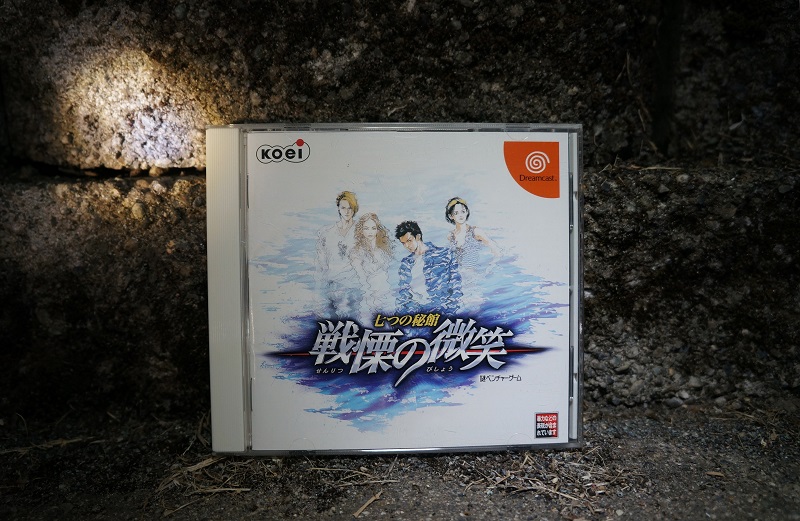
Nanatsu no Hikan: Senritsu no Bishou
Sega Dreamcast, released January 2000
Another very early release in the Dreamcast’s horror library is Nanatsu no Hikan: Senritsu no Bishou, which is the second game in the Nanatsu no Hikan series, following the first game that was released on PlayStation and Saturn just one generation before.
While the first Nanatsu game was an entirely FMV-based point-and-click exploration game with some dark horror themes, Senritsu no Bishou really doubled down to make it more like some of the survival horror classics of its day. The game plays out like a fully 3D Resident Evil-type game, featuring some on-the-fly variable camera angle options as well as including co-op play with another player for the story mode – a first for the genre.
The game’s combat is decently fluid and fun for its time, especially with the option to change camera angles giving you an interesting leg up during battles. Even if it does control fairly clunky overall, this is nothing new for the time. There’s also some very obtuse late-game puzzles that can be extremely rough to get through, especially if you don’t speak Japanese, but the bizarre story and exploration segments are generally interesting enough to keep you going.
Thankfully, even if you don’t speak Japanese, there’s hope for you to enjoy the game anyway, as a team of fans have recently completed a full English translation patch for the game, since the originally-planned Western release was canceled just a few months after the Japanese release.
While games like ObsCure (2004) explored co-op play with friends just a few years later, and the Resident Evil series tried out co-op horror with Outbreak (2003) and Resident Evil 5 (2009,) Senritsu was a forerunner for things to come, since co-op horror experiences shortly thereafter became much more commonplace in the genre.
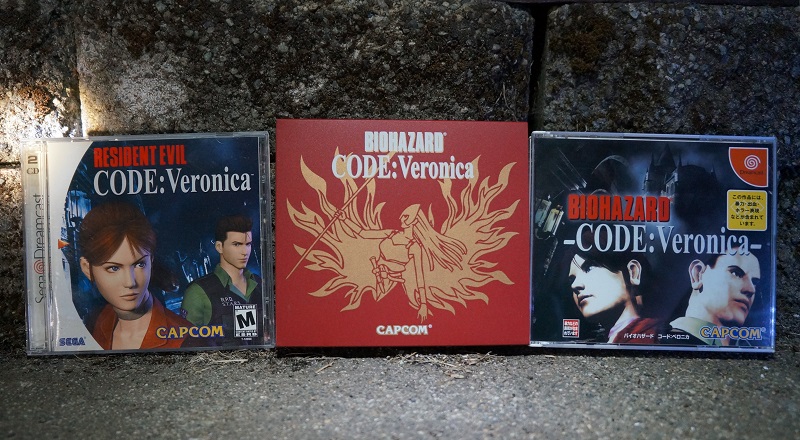
Resident Evil CODE: Veronica
Sega Dreamcast, released February 2000
By the late 90s, the Resident Evil series was at the top of its game, with Resident Evil 2 being one of the highest-selling games of 1998 and both Resident Evil 3: Nemesis and Resident Evil Survivor following in late 1999 and January of 2000, respectively.
What many fans may not know is that RE3: Nemesis and CODE: Veronica were actually developed simultaneously, and while Nemesis was originally set to be a spinoff with a different protagonist and a “side story” subtitle to go with it, some politics between Capcom and Sony flipped this around. This resulted in Capcom attaching Jill Valentine and a canonical “number” to Nemesis in favor of having a stronger marketing campaign for Sony.
In the process, this relegated CODE: Veronica, which was originally set to be called Resident Evil 3, to what was marketed more confusingly as a “side story,” despite having two of the main protagonists from the series’ history in the main roles. CODE: Veronica was released just 5 months after Nemesis, but the difference between the two quickly became clear.
For many fans, it was clear that CODE: Veronica was the stronger of the two games, featuring fully rendered 3D environments with real-time dynamic camera angles for the first time in a main RE series entry. On top of these brand new features, it also had far more advanced graphical and lighting capabilities, as well as increased disc space, a viewable health meter on your controller through the Dreamcast’s VMU, and a lot more overall polish on the final product than Nemesis, which is essentially a re-skinned RE2.
CODE: Veronica was about two or three times as long as the previous RE games and presented a much more complex and winding cinematic story. It also featured some of the best music and most detailed environments the series had seen to date. This is now the game that most RE fans are clamoring for Capcom to remake, but just like many others, I’d say just go play the original CODE: Veronica. It still holds up as one of the strongest entries in the franchise. It marked a clear step forward and defined what the standards for quality and complexity in horror games would become in the future.
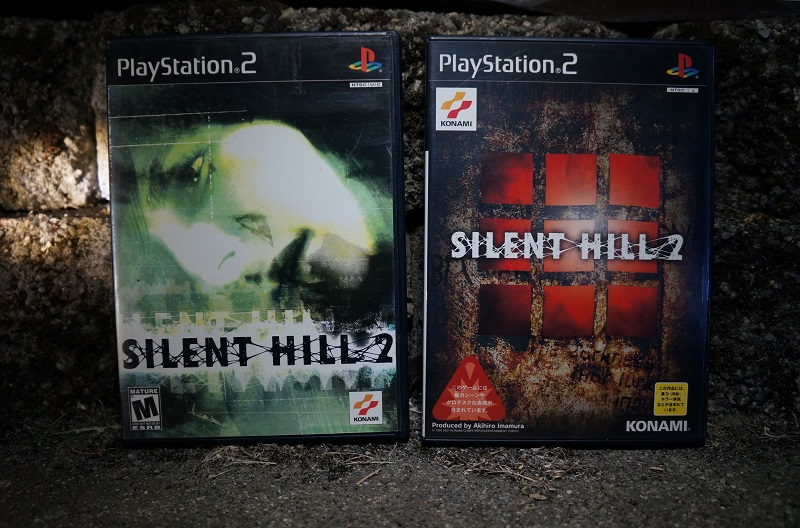
Silent Hill 2
Sony PlayStation 2, released September 2001
After the success of the first Silent Hill game in 1999, Konami quickly started developing a sequel for Sony’s brand new PlayStation 2 console, hoping to up the complexity and diversity of influences in several ways. Besides being generally based on the classic Dostoevski novel “Crime and Punishment,” the developers spoke early on about how the second game would be even more focused on inspirations from various authors as well as filmmakers such as Dario Argento, David Lynch, David Fincher, Alfred Hitchcock, and David Cronenberg. To any horror nerd in the late 90s, this was some of the best news you could ever hope to hear.
Similar to the first entry, Silent Hill 2 featured similar kinds of esoteric storytelling elements that attempted to transform the medium of video game storytelling, with uses of deep psychological horror, symbolism, metaphors, as well as highly cinematic elements all around. SH2 also introduced the fan-favorite character “Pyramid Head” into the lore of the series, which would later be used in several Silent Hill games and movies.
The game itself continued most of the elements you remember from the first Silent Hill, with chilling sound design, clever use of darkness and light, dynamic camera angles, and terrifying creature encounters, giving a feeling that’s familiar, but with a new touch. While it may not have been much of a step forward from the first Silent Hill, it reached a bigger audience on a newer console and benefited from the momentum of being a sequel.
Just three months after the original release on PlayStation 2, an Xbox version of the game was released with an extra side-story and a few other small additions, giving the game even more content and story to explore past the main story. Silent Hill 2 went on to become one of the best-selling games of its time and is still heralded as one of the greatest survival horror games ever made. Its legacy continues today, with fans going back to interpret and enjoy the series nearly a decade after the last new game in the series was released.
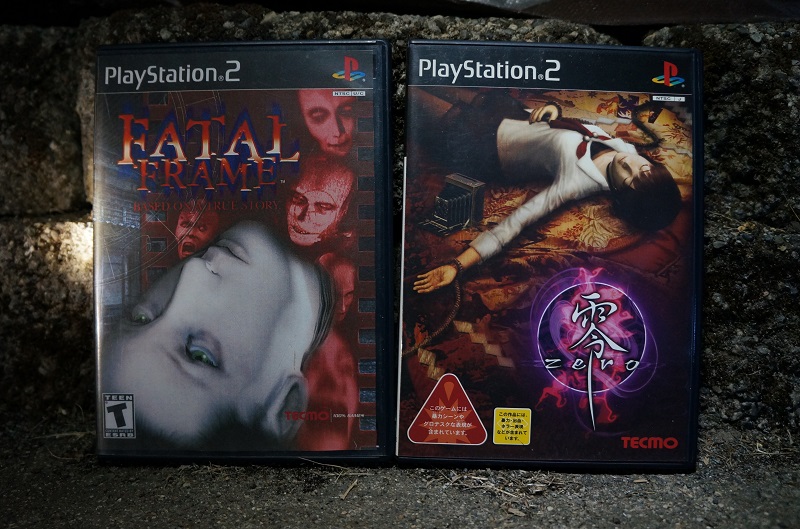
Fatal Frame
Sony PlayStation 2, released December 2001
In the late 1990s, classic game developer Tecmo decided to try their hand at horror, since the popularity of these types of games had been steadily increasing in the latter half of the decade, and they felt they could offer a new take on the genre. Soon after, the company most known for football games, Dead or Alive, and Ninja Gaiden cooked up Fatal Frame (known as Zero in Japan and Project Zero in Europe and Australia).
Most horror games up to this point, even when developed by Japanese developers, tended to focus on horror from a Western perspective, including Western settings, fears, and cinematic influences. Fatal Frame was really the first game to delve into horror from a purely Japanese perspective. The entirety of the game takes place in Japan and deals with all kinds of native cultural aspects of horror, including vengeful ghosts and ancient Shinto mythology.
This creative direction was inspired by series creator Makoto Shibata’s personal experiences with what he believed to be the paranormal. He mixed these experiences with many elements from the Japanese horror films that were also growing in popularity around the world in the late 90s, like Ringu (1998) and Ju-on (2000).
The result was a very interesting game that mixed up traditional survival horror gameplay with a new gameplay element – a special camera that is both a weapon and a means to investigate the restless spirits you encounter. This made the combat a tension-filled mix of traditional maneuvering and switching to the first-person perspective to look through the lens of the camera in order to line up your ghost-capturing shots. This allowed for plenty of unique opportunities for scares and tension-building in a way that no previous game had tackled before.
Despite releasing to critical acclaim, Fatal Frame did not sell very well upon release, even though it did go on to inspire five more games in the series over time. The influence of Fatal Frame is still felt today, as there are several indie games in the last ten years that use a camera (or cell phone) as your weapon for combat, and just a few months ago in 2021, they announced a new port of the most recent game in the series after being entirely dormant for nearly seven years.
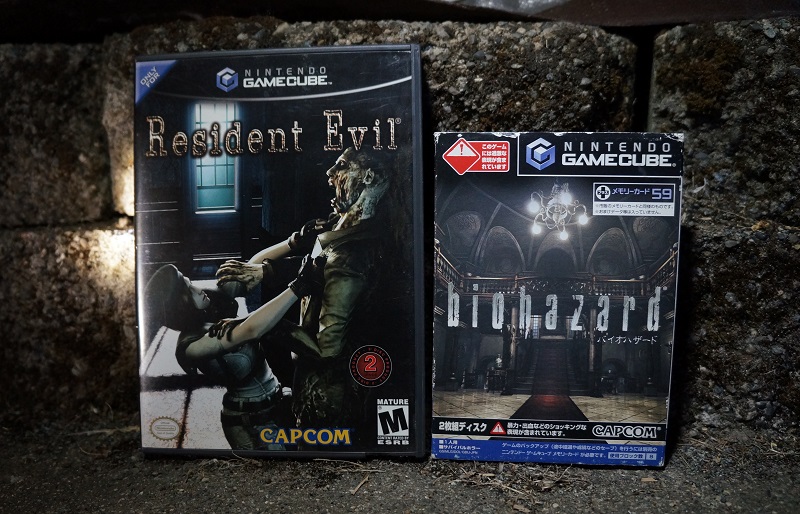
Resident Evil (REmake)
Nintendo GameCube, released March 2002
Sometime in the year 2000, Capcom made a hefty exclusivity partnership with console giant Nintendo to finally bring the Resident Evil series to Nintendo’s new GameCube console and create some new games exclusively for the console. As part of this deal, they also agreed to bring all the previous games in the RE series to the GameCube, however, there was one caveat that would change survival horror history forever.
In a move that was still a rather new idea for the world of video games, Shinji Mikami decided that instead of just simply porting the original Resident Evil title to the GameCube from the original PlayStation/Saturn versions, he would instead remake the entire game from the ground up. He didn’t like the way the original Resident Evil had aged and felt he could make the game closer to his original vision and achieve closer to film-quality visuals using the graphical capability of the GameCube hardware.
This remake took things a few steps further and also updated several of the puzzles, encounters, game mechanics, and even the story to include several elements that were cut from the original game. The remake was released just a few months after the launch of the GameCube and was considered to be the biggest incentive to own the console at the time.
The end result was a game that is still touted as one of the best survival horror games of all time and one that established a strong blueprint for successful remakes that endures to this day. While it was heavily praised by critics, the game did not sell very well in the end, likely due to the GameCube hardware being a hard sell among many gamers at the time. However, upon its re-release in the early 2010s, the REmake was a huge success across all platforms.
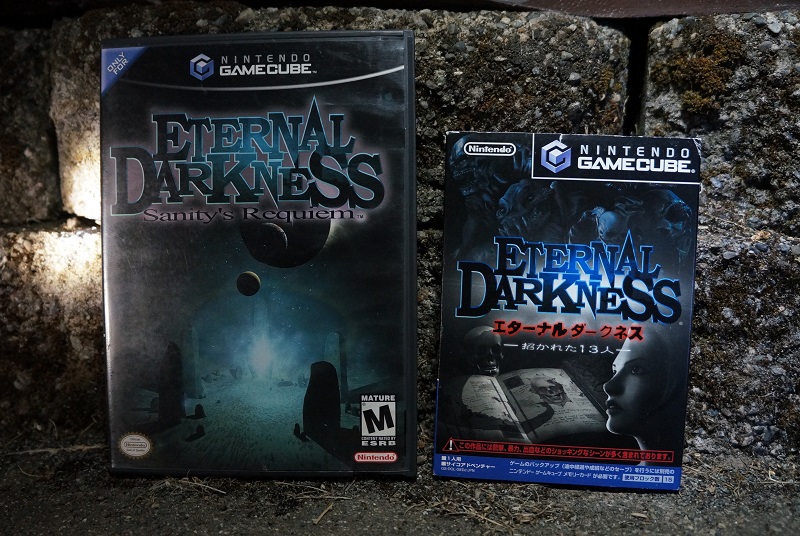
Eternal Darkness: Sanity’s Requiem
Nintendo GameCube, released June 2002
After the release of Blood Omen: Legacy of Kain in 1996, Silicon Knights became a name that was more well-known in the gaming community. Just a few years later, the company was contracted by Nintendo to create games exclusively for Nintendo consoles. This collaboration led to the development of Eternal Darkness.
While the game was originally in planning for the N64, work was moved over to GameCube after the deal was struck with Nintendo. This allowed more flexibility and power behind the game, and the ability to include several elements that were far beyond the N64’s capabilities.
While the main gameplay of Eternal Darkness is not far off from a mix of Resident Evil and Devil May Cry, the way the game tormented players with its “sanity effects” was where it set itself apart from its contemporaries. As you played the game, you were required to maintain a sanity meter, and when the meter got too low, you would often be interrupted by random events or illusions that signified your character losing their sanity. In effect, the player would also suffer from the same effects.
These effects manifested in several ways, some more severe than others. The simple effects were things like the camera angle tilting outside of your control, random noises, and ceilings or walls bleeding at random. Other, more devious tricks were also played on the player, such as warping you back to a previous room as if no progress were made, the character suddenly appearing to die, a false “game over” screen, and simulated errors and technical issues to make you think the game had crashed or even that all your save files had been deleted.
While the game was met with critical praise, it was another title that did not meet sales expectations at the time. Even though it wasn’t commercially successful and was later denied a sequel, the lasting effects Eternal Darkness had on horror gaming are still felt today. Since its release, several modern games have included similar effects to confuse and trick the player, and a “sanity meter” is something that’s been featured in a lot of modern games like the Amnesia series, Song of Horror, and many others. Eternal Darkness also has the fun historical distinction of being the first Mature-rated game ever published by Nintendo, going somewhat against their general business model up to that point.
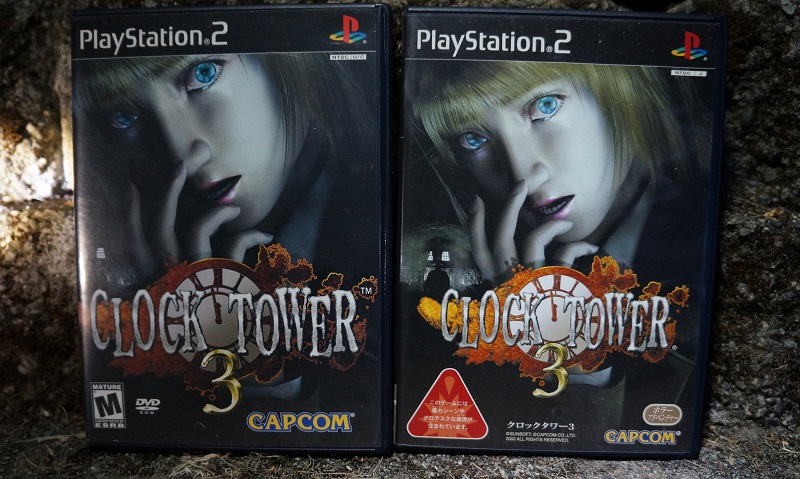
Clock Tower 3
Sony PlayStation 2, released December 2002
After gaining prominence as one of the best horror gaming series in the industry during the 1990s, Clock Tower became dormant after 1998’s Ghost Head (inaccurately titled and badly translated as Clock Tower II: The Struggle Within in the West), when developer Human Entertainment went out of business in 2000.
In early 2001, Capcom announced they would be co-producing a new Clock Tower game in collaboration with Sunsoft (who technically owned the rights to the series,) for the PlayStation 2 console, and bringing in famed Japanese film director Kinji Fukusaku (Battle Royale) to direct the game.
With Clock Tower 3, the developers brought the fear-inducing cat-and-mouse gameplay of the CT series blazing into the third dimension, giving you full control over your character instead of the point-and-click style the previous games in the series were defined by. While it was generally rough around the edges, CT3 added an extra layer of fear to the gameplay by requiring you to be completely aware of your 3D surroundings, while several intimidating killers chase and taunt you with every step.
The designs of the killers and bosses were over-the-top and creepy, some being based on real serial killers from history. The cinematic aspects ended up playing out quite well, even if the story does get far more supernatural than the previous CT games. As with many of the titles mentioned thus far, the game ended up as a commercial failure, though the critical response was also not terribly welcoming, either. Regardless, it still left a legacy for several reasons.
Clock Tower 3 ended up being the last thing Fukusaku directed before he passed away in 2003, leaving a strange legacy to a man who had been directing films since the 1960s. Capcom would go on to use nearly the same game engine for their own Haunting Ground in 2005, which is considered a spiritual sequel to Clock Tower 3. Since then, the 3D gameplay that CT3 utilized has been exploited by a whole host of modern horror games such as Remothered, Outlast, Amnesia, Dead By Daylight, Friday the 13th, and countless others.
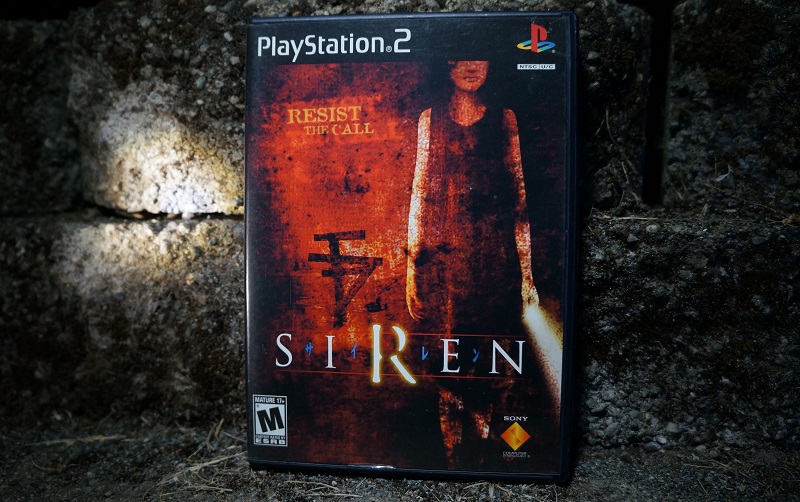
Siren
Sony PlayStation 2, released November 2003
In the early 2000s, Sony decided to test the survival horror waters by creating a game entirely developed and published under their own wing. They formed Project Siren, a development team that consisted of several members of the original Team Silent, the team responsible for the first Silent Hill.
While the DNA of the first Silent Hill game is 100% running through the blood of Siren, it sets itself apart from its predecessor in several important ways, starting with the gameplay. Instead of having any reliable way of defending yourself, Siren is one of the first horror games where you have to rely entirely on stealth to progress. The characters generally have no weapons until the end of the game and the environments are extremely dark, making it next to impossible for you to see a few feet in front of your character, even with a flashlight. In order to help you, a new mechanic dubbed “sight jacking” was introduced.
This mechanic enables characters in Siren to see through the eyes of nearby enemies. This allows players to understand their surroundings better, plan routes, and see clues to puzzles and progression by analyzing the drone-like behavior of enemies’ actions. This clever mechanic leads to some of the tensest and most frightening situations in any horror game to date and adds a ton of subtlety and complexity to the gameplay, something few other games of the time had quite nailed before.
Siren is also the first 3D horror game to map the faces of real actors onto their in-game models, giving a highly cinematic feel to the visuals and cutscenes. This was several years before facial capture was being used regularly in video games, and this feature was well ahead of its time.
Another unique feature of Siren is the complex and winding story, which is told out of chronological order and requires players to unlock it piece by piece. Players must dig deep and find all the secrets in order to fit together all the different events of all the characters’ perspectives in order to ultimately reach the true ending of the game.
Siren went on to inspire a sequel (never released in the US,) as well as a PS3 “re-imagining,” a movie, and a manga series, but nothing ever quite captured the magic of the original. It was also the first game that really utilized stealth mechanics with very low situational awareness to evoke fear in players. This mechanic has since gone on to become a staple in modern horror games to varying degrees.
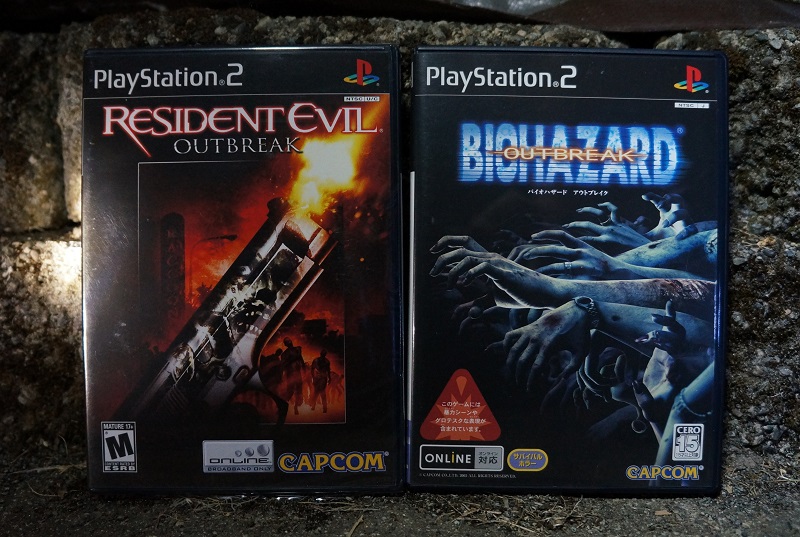
Resident Evil Outbreak
Sony PlayStation 2, released December 2003
With its origins dating back to 1998 as Resident Evil Online, Resident Evil Outbreak would be a pioneering title for several reasons, but one with a tumultuous history before its release and an even worse fate afterward.
While 1998 was far too early to release an online-based game for consoles, 2002 turned out to be the year Capcom would go all-in with the idea for a 4-player co-op Resident Evil experience that used the PS2’s newly released network adapter for online connectivity. What they didn’t account for was not very many people had broadband online connectivity in the early 2000s, and on top of this, anyone who already owned a PS2 also needed to buy the pricey network adapter add-on to be able to play the game online.
With many players stuck without the option to play the online version of the game, they were forced to play the single-player offline version, which paled in comparison to what the online experience was planned to be. Clunky controls, long load times, lackluster AI partners, and no pause option for the menu screen were just a few of the issues that plagued the single-player Outbreak and quickly turned even most RE fans off from the game.
For those few who were able to play it online, the experience was very ahead of its time, offering a robust and complex online co-op experience, though not without a few caveats due to the obvious lack of a voice chat feature, forcing players to use in-game emotes to communicate.
An add-on for Outbreak came shortly after in 2004 with a few more scenarios to enjoy, but ultimately the servers were fully shut down in 2007 in the West, leaving it dead in the water for players wanting the online experience. This was the case until 2014 when a group of passionate fans was able to construct their own servers so players could play with each other online again. This gave players who were dedicated enough to jump through all the hoops to get it running a new chance at playing the game.
The fact that this is still the only RE game to feature the classic RE gameplay in a co-op environment shows how forward-thinking Capcom was since online co-op in horror gaming became a much more commonplace feature in the late 2000s. Today, fans are still clamoring for Capcom to resurrect Outbreak with a remaster using modern online servers to run the game, and this would certainly be a welcome revival for the series.
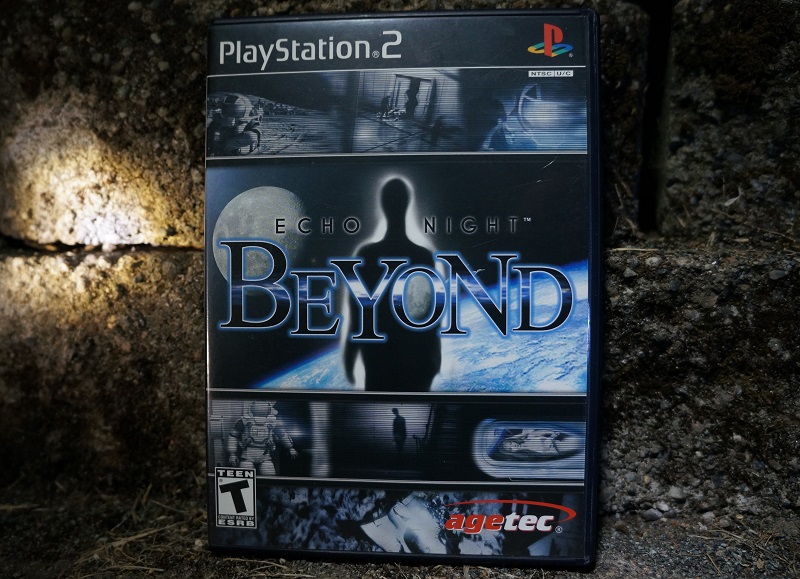
Echo Night Beyond
Sony PlayStation 2, released January 2004
After releasing two previous Echo Night games on the PlayStation, developer FromSoftware (Dark Souls, Bloodborne) set their sights on Sony’s new PlayStation 2 console. Echo Night Beyond was created to deliver an experience that harnessed the power of the PS2.
Similar to the previous two Echo Night games, Beyond plays out close to what most people would call a “walking simulator” nowadays, utilizing a first-person perspective and no real combat, only sequences to avoid ghosts when they come calling. What sets Beyond apart from the other EN games (as well as most other horror games of the time) is the setting, which takes place on a seemingly abandoned space station on Earth’s moon. The backdrop of the vast darkness and emptiness of space and an empty space station that was clearly inhabited by a whole colony of people shortly before your arrival is creepy enough, but when you start encountering the ghosts within, it takes on a whole other life of its own.
There had only been a few horror games set in space before this, but none that truly captured the aesthetic and managed to channel cinematic horror influences, like the Alien series or 2001: A Space Odyssey. In some key ways, Beyond feels like a precursor to games like Dead Space, Alien Isolation, and several other more recent indie horror games also set in space.
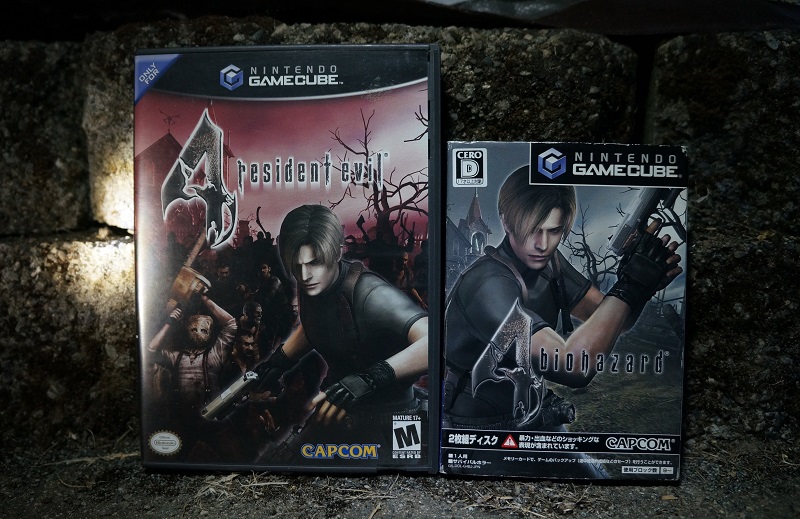
Resident Evil 4
Nintendo GameCube, released January 2005
After releasing the Resident Evil REmake and Resident Evil Zero in 2002, Capcom started diving head-first on the development of the next numbered RE entry. After going through several different iterations dating as far back as 1999 and entirely scrapping all of them (including one that ended up becoming Devil May Cry, as well as a more horror-focused “Hookman” demo shown at E3 2003), Capcom finally decided on a final vision for the project around late 2003 and continued working to finish it up.
After several delays from their originally committed Summer 2004 release date, RE4 finally saw the light of day in January of 2005. The final result would change the landscape of horror gaming as nothing else had since the original Resident Evil in 1996.
The game received universal praise and became one of the highest-selling games of all time. The change of gameplay style from the cinematic camera angles to over-the-shoulder action-oriented gameplay caused a shockwave in the entire gaming industry that is still felt to this day and as a result, RE4 is often cited as one of the greatest video games ever created.
Almost like clockwork, nearly every horror game released after RE4 also featured an over-the-shoulder action approach instead of the classic cinematic, survival horror style. This change also ended up being the inspiration for several other huge gaming projects and franchises over time, including gritty action games like Gears of War as well as a good 75% of horror games that followed it.
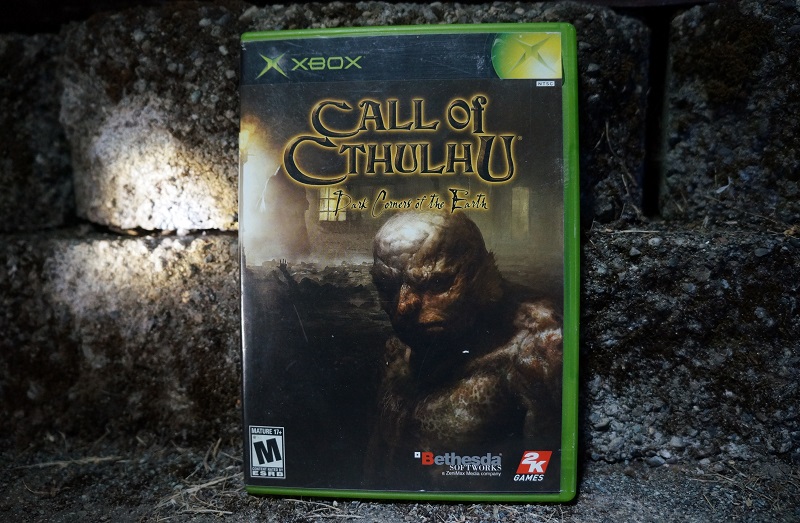
Call of Cthulhu: Dark Corners of the Earth
Microsoft Xbox, released October 2005
Call of Cthulhu: Dark Corners of the Earth is another game with origins as far back as 1999, and one that had an extremely troubled development cycle that lasted around six years. The end result, however, is what many have called the greatest horror game of all time.
The game plays out as an immersive re-imagining of H.P. Lovecraft’s classic tale “The Shadow Over Innsmouth” done in a first-person perspective. In it, you play a private detective named Jack Walters who has been sent to the fictional town of Innsmouth to investigate the disappearance of a local grocery store clerk.
Shortly after arriving, Jack immediately notices that everyone in town is acting very rude and suspiciously to him, and not long after that, you’ll start to hear conversations through the walls of people plotting to kill you. This begins the rollercoaster ride that is the rest of the game. The way the game cleverly uses sound design to constantly build dread as you eavesdrop on the townspeople’s conversations is a mechanic that would eventually be used in many horror games that followed, as the technology for dynamic and surround sound became more commonplace.
You’re thrust into a ride of tension, stealth, and survival as you try to expose the secrets of Innsmouth and escape with your life. In a unique move, Dark Corners features no HUD display at all, leaving you completely immersed in the experience as you sneak and fight your way through a dark cult that always seems to be just one step behind you. Along with the lack of a HUD also comes a total lack of a crosshair or any kind of indicator of how many supplies you have left to survive, including how much ammo is in your guns, making the game feel a lot like Monolith’s Condemned: Criminal Origins, which was released just a few months later.
Similar to the aforementioned Eternal Darkness, Dark Corners also features a dynamic sanity system that you must maintain, and which is constantly affected by looking at unsettling things in the world or encountering enemies. The big difference here is that not only will the game play tricks on you visually and aurally as your sanity depletes, but it can also result in your character committing suicide or going irreparably insane, resulting in a game over.
Dark Corners was critically well-received but was not a financial success, probably partially due to the fact that the Xbox 360 was released just one month after this game, Having said that, those who chose to take the ride experienced one of the most chilling games of its time and an immersive journey of horror that stood unique above the rest, and that has inspired dozens of Lovecraft-inspired horror games since then.
_____________________________________________________________
Aside from all the games that were truly influential during this period, there were also quite a few others that are enjoyable or noteworthy for several reasons. These honorable mentions may be worth looking into if you’d like to delve deeper into this era of horror games:
Resident Evil Zero, the FEAR, Silent Hill 4: The Room, Haunting Ground, Cold Fear, ObsCure, Carrier, Illbleed, The Thing, Land of the Dead: Road to Fiddler’s Green, House of the Dead 2 & 3, Ghost Vibration, Extermination, The Ring: Terror’s Realm (one of the absolute worst)
Hopefully, you’ve enjoyed this trip back to one of the most fruitful periods in horror gaming history and maybe learned something new along the way. This series of articles will continue soon with the next generation, where the Xbox 360, PlayStation 3, and Wii competed for horror gaming greatness, as well as a special bonus article planned along the way.
Stay tuned for further installments, and feel free to discuss any memories of these games in the comments!

 IDOLxISxDEAD
IDOLxISxDEAD